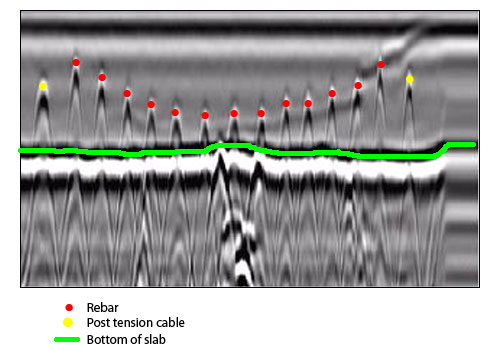Precision and Precision in Concrete Scanning Solutions
Precision and Precision in Concrete Scanning Solutions
Blog Article
Introduce the Transformative Power of Concrete Scanning in Making Best Use Of Performance and Security
Concrete scanning has emerged as a crucial device in the building and construction sector, supplying unrivaled benefits in improving job performance and guaranteeing safety and security criteria. By making use of advanced innovation, concrete scanning allows professionals to see past the surface, uncovering covert intricacies that could impact the structural honesty of a building. The transformative power of concrete scanning lies in its capability to give thorough insights and real-time data, revolutionizing how tasks are planned and implemented. As we look into the details of this ingenious technique, a globe of possibilities opens up, showcasing a brand-new period of building and construction methods that prioritize precision and safety.
Significance of Concrete Scanning
Making certain the structural stability and security of construction tasks begins with the crucial action of performing extensive concrete scanning. Concrete scanning is a non-destructive technique made use of to detect and map subsurface aspects within concrete structures.
The significance of concrete scanning can not be overstated, as it plays a crucial duty in avoiding accidents, decreasing job delays, and making sure the long-term resilience of the building and construction. By determining prospective dangers before the building and construction stage starts, building contractors can apply proper precaution and make notified choices regarding the style and execution of the task. Furthermore, concrete scanning helps in optimizing job timelines and spending plan by preventing unexpected costs and hold-ups that may emerge because of unpredicted blockages within the concrete. Inevitably, buying thorough concrete scanning is a proactive strategy that boosts both efficiency and safety in construction jobs.
Just How Concrete Scanning Works
Concrete scanning operates as an important tool in building and construction tasks by employing sophisticated innovations to discover and map subsurface elements without causing structural damage. Ground Penetrating Radar (GPR) and Electromagnetic Induction (EMI) are 2 main methods utilized in concrete scanning.
During the scanning process, the data accumulated is evaluated in real-time, allowing instant identification of prospective threats or barriers beneath the surface. This info aids in decision-making, making certain that building tasks continue safely and effectively. Additionally, 3D imaging software application can be made use of to produce thorough maps of the subsurface elements, further boosting job planning and implementation. By using these advanced technologies, concrete scanning considerably decreases the risk of pricey problems and injuries on construction websites.
Benefits of Concrete Scanning
Using innovative scanning technologies in construction jobs provides a wide variety of advantages, improving both effectiveness and security on-site. Among the main benefits of concrete scanning is the ability to spot and situate embedded things such as rebar, post-tension wires, and channels accurately. By identifying these components prior to exploration or reducing into concrete frameworks, the risk of unintended strikes is substantially lowered, stopping possible injuries to employees and damages to the framework itself. Concrete scanning helps in planning and creating much more successfully, as it offers specific info concerning the location and depth of architectural parts.

Case Researches: Concrete Scanning Success

In one more case, a construction firm used 3D concrete scanning to examine the condition of aging concrete structures in a historic building. The thorough scans provided beneficial insights into the degree of damage and assisted focus on maintenance efforts properly. By proactively attending to areas of issue identified through scanning, the company had the ability to extend the lifespan of the framework and make sure resident safety and security.
These case research studies highlight the transformative power of concrete scanning in improving effectiveness, accuracy, and security in building tasks.
Carrying Out Concrete Scanning in Projects
Implementing innovative scanning innovations during construction tasks has come to be significantly necessary for enhancing precision and safety. By integrating concrete scanning into task planning and implementation, construction groups can determine prospective risks, such as rebar or post-tension cables, hidden within concrete structures. This proactive strategy lessens the risk of accidents, hold-ups, and costly rework, inevitably bring about much more efficient project timelines and budgets.
To execute concrete scanning efficiently, project supervisors ought to team up closely with experienced scanning experts to determine the most appropriate scanning methods for the details job requirements. Involving scanning professionals from the early phases of a project enables the group to develop extensive scanning plans that attend to key areas of concern and make certain detailed information collection.
Furthermore, incorporating concrete scanning into routine job workflows can improve decision-making processes, as real-time scan information supplies immediate understandings right into the condition of concrete structures - Concrete Scanning. This data-driven method helps with imp source notified analytic and makes it possible for teams to make modifications quickly, promoting a society of efficiency and safety throughout the task lifecycle

Final Thought
To conclude, concrete scanning plays a crucial function in boosting performance and safety in building projects. By utilizing innovative modern technology to map and spot out underlying structures within concrete, this process assists to prevent pricey blunders, make certain structural integrity, and minimize risks on website. With the ability to uncover covert elements and offer exact information, concrete scanning verifies to be a useful tool for enhancing task end results and making best use of total success.
Concrete scanning is a non-destructive approach utilized to detect and map subsurface elements within concrete frameworks. In addition, concrete scanning assists in optimizing task timelines and spending plan by preventing unexpected expenses and delays that may develop due to unforeseen obstructions within the concrete. One significant case research study involves a large-scale remodelling task where concrete scanning played a critical role in making sure job Discover More success.In one more case, a building firm used 3D concrete scanning to assess the condition of maturing concrete structures in a historical building. By integrating concrete scanning right into job planning and implementation, building and construction teams can recognize possible threats, such as rebar or post-tension cable televisions, concealed within concrete structures.
Report this page